
Invitation to conference
On behalf of IUSS (International Union of Soil Science), Norwegian Society of Soil Science (Norsk Jordforening), ESSC (European Society for Soil Conservation), NJF (Nordic Association for Agricultural Science), Norwegian extension Service (NLR), NIBIO and NMBU and the Organizing Committee, we are pleased to invite you to attend the International seminar: Soil and water conservation under changing climate in Northern or high altitude conditions.
The seminar will be hosted in Ås, Norway from 4- 5th May 2022 with an excursion on the 6 th May.
The objective of the seminar is to bring new knowledge on soil and water conservation under changing climate in Northern or high altitude conditions. Climate change is expected to bring changes in precipitation, rainfall, frozen soils, snowmelt conditions, drought periods and extreme weather that will affect runoff and hydrological pathways in the agricultural landscape. Also, soil functions and soil health will face new challenges. These changes will influence losses of nutrients and erosion processes- and put pressures on the need of efficient measures. Best management practices must be revised and developed to expected changes in climate. The seminar will also address monitoring, modelling and development of planning tools for analysing effects and planning for adaptation measures.
Topics:
- Soil and water conservation challenges
- Soil functions and soil health
- Changes in hydrological pathways
- Best farming practices
- Monitoring, modelling and planning tools
The Seminar is open to scientists, students, managers, policy and decision-makers. It will consist of invited lectures, scientific sessions with oral and poster presentations, and a scientific excursion.
Scientific committee
Bal Ram Singh balram.singh@nmbu.no
Trond Børresen. Trond.borresen@nmbu.no
Johannes Deelstra johannes.deelstra@nibio.no
Marianne Bechmann marianne.bechmann@nibio.no
Lillian Øygarden lillian.oygarden@nibio.no
Katarina Kyllmar katarina.kyllmar@slu.se
Magdalena Bieroza magdalena.bieroza@slu.se
ESSC:Carmelo Dazzi carmelo.dazzi@unipa.it
Goswin Heckrath goswin.heckrath@agro.au.dk
Katri Rankinen katri.rankinen@syke.fi
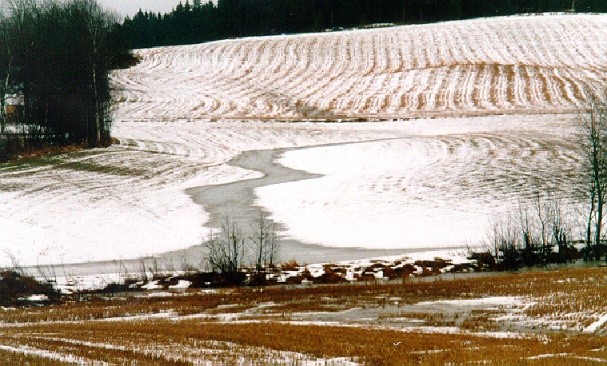
Deadlines:
Abstract submission. 31 January 2022
Decisions of oral /poster presentation: 15 February 2022
Early registration: 20 March 2022
Final Registration: 25 April 2022
|
Category |
Early registration (before 20 March) |
Late Registration |
|
Regular participant |
NOK 2500,- (250 euro) |
NOK 3000,- (300 euro) |
|
ESSC, IUSS, NJF X members |
NOK 2000,- (200 euro) |
NOK 2500,- (250 euro) |
|
Excursion |
NOK 400,- (40 euro) |
NOK 400,- (40 euro) |
|
Social dinner (4 May) |
NOK 350,- (35 euro) |
NOK 350,- (35 euro) |
|
Digital participation |
NOK 500,- (50 euro) |
NOK 500,- (50 euro) |
|
Accompanying person |
Can register for lunch, dinner, excursion |
|
X for those members who are up to date with the membership fee for 2022
Included in the registration fee; Access to the Venue facilities, coffee and tea during breaks, abstract. Additional cost for conference dinner and for excursion.
Digital participation. Access to the scientific sessions. Abstracts.
Organising committee:
NMBU:
Bal Ram Singh. Prof Emeritus. Chair of IUSS, Division 3: Soil and Land use, Member of the National board of IUSS and Norwegian Society of Soil Science (Norsk Jordforening).
Trond Børresen Professor, Soil physics, Soil Tillage. Soil and water management.
NIBIO:
Johannes Deelstra, researcher. National Agricultural Environmental Monitoring Programme, drainage, agrohydrology. Norwegian Society of Soil Science (Norsk jordforening).
Marianne Bechmann, Research Professor. Agricultural effects on water quality. Implementation of mitigation strategies. National Agricultural Monitoring Programme.
Lillian Øygarden, researcher, ESSC, IUSS, Commission 3.2: Soil and Water Management.
NJF (Nordic association for agricultural science) and Norwegian Agricultural Extention Service:
Svein Skøien. Member of the board of Norwegian Society of Soil Science (Norsk jordforening).
Join Zoom Meeting
https://us02web.zoom.us/j/3708807441?pwd=MjlnQ3hXZlhON3VJY1JyMnJNblpDUT09

Information
This activity has ended, and it is no longer possible to register.

PROGRAM OF THE CONFERENCE
The objective of the seminar is to bring new knowledge on soil and water conservation under changing climate in Northern or high altitude conditions. Climate change is expected to bring changes in precipitation, rainfall, frozen soils, snowmelt conditions, drought periods and extreme weather that will affect runoff and hydrological pathways in the agricultural landscape. Also, soil functions and soil health will face new challenges. These changes will influence losses of nutrients and erosion processes- and put pressures on the need of efficient measures. Best management practices must be revised and developed to expected changes in climate. The seminar will also address monitoring, modelling and development of planning tools for analysing effects and planning for adaptation measures.
Topics:
- Soil and water conservation challenges
- Soil functions and soil health
- Changes in hydrological pathways
- Best farming practices
- Monitoring, modelling and planning tools
Presentation of Keynote Speakers:
Presentation
For download presentation from the conference :
For download :Book of abstracts
-
Wednesday, May 4, 2022
-
08.00-09.15
Registration in Vitenparken
-
09.15-09.30
Welcome - introduction
-
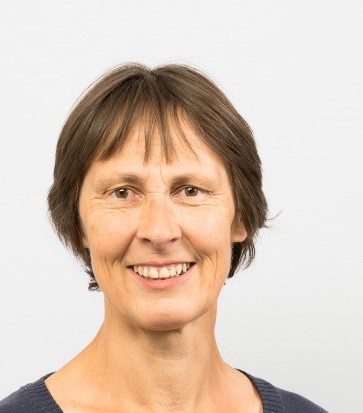 09.30-10.00
09.30-10.00Topic 1: Soil and water conservation challenges
Chair: Marianne Bechmann, NIBIO, Norway
Keynote: Lillian Øygarden, NIBIO, Norway
Climate change and challenges for soil and water conservation under northern and high-altitude conditions -
10.00-10.20
Drivers and potential solutions for phosphorus losses in cold climates: A Canadian perspective
Jian Liu, University of Saskatchewan, Canada
-
10.20-10.40
Where does the sediment go? - Changing pathways in a changing climate
Robert Jan Barneveld, NIBIO, Norway
-
10.40-11.00
Coffee
-
11.00-11.20
Estimation of buffer zone efficiency: future climate condition perspective
Dominika M. Krzeminska, NIBIO, Norway
-
11.20-11.40
Controlled drainage with subirrigation: a management measure to discharge, retain and recharge fresh water
Janine A. de Wit, KWR Water Research Institute, the Netherlands
-
11.40-12.00
Discussion
-
12.00- 12.45
Lunch
-
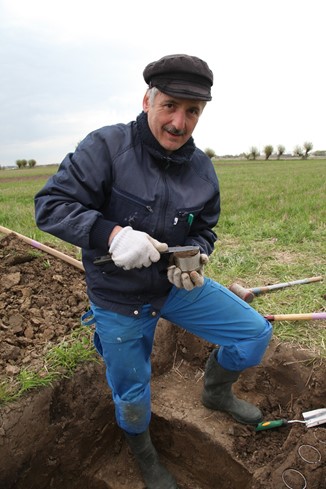 12.45-13.15
12.45-13.15Topic 2: Soil functions and soil health
Chair: Jannes Stolte, NIBIO, Norway
Keynote: Thomas Kãtterer, Sweden
Challenges, synergies and trade-offs from a Nordic perspective -
13.15-13.35
The role of freeze-thaw cycles for the physical quality og agricultural soils- a synthesis of current knowledge and potential consequence with climate change
Tobias Klöffel, SLU, Sweden
-
13.35-13.55
Assessing soil health indicators on arable land in pedo-climatic zones in Norway
Frederik Bøe, NIBIO, Norway
-
13.55 - 14.15
Effectiveness of deep tillage to alleviate subsoil compaction in a clay soil in South-East Norway
Anneka Mordhorst, Institut für Pflanzenernährung und Bodenkunde, Germany
-
14.15 - 14.35
Possibilities for plant roots to loosen compacted arable soil in South Norway
Till Seehusen, NIBIO, Norway
-
14.35- 14.55
Coffee
-
14.55- 15.15
Mitigation of N2O emissions following ploughing of grassland. NMBU, Norway
Marina Bleken, NMBU, Norway
-
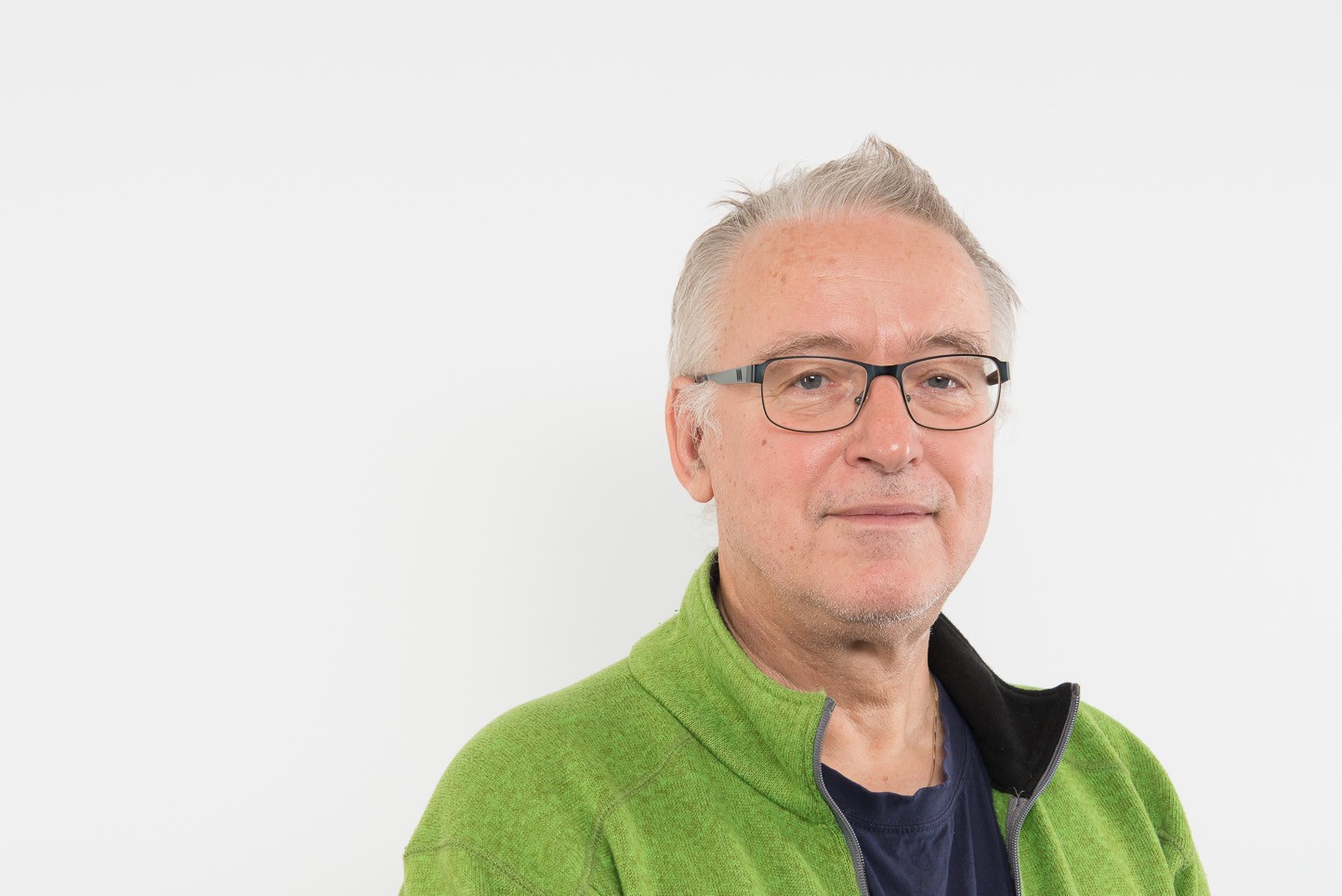 15.15-15.45
15.15-15.45Topic 3: Changes in hydrological pathways
Chair: Katri Rankinen, Finnish Environment Institute, Finland
Keynote: Johannes Deelstra, NIBIO, Norway
Changes in hydrological pathways -
15.45- 16.05
Using C-Q slope to identify hydrological pathways and prioritise mitigation goals
Magdalena Bieroza, SLU, Sweden
-
16.05- 16.25
Quantification of groundwater and subsurface drainage runoff components based on observations of nitrogen concentrations.
Arturs Veinbergs, Latvia University of Life Sciences and Technologies, Latvia
-
16.25-17.00
Discussion
-
17.30-20.00
Dinner in Vitenparken
-
Thursday, May 5, 2020
-
08.45-09.00
Topic 3 continue: Changes in hydrological pathways
Information about program
-
09.00-09.20
Influence of climate change on water partitioning in agricultural watersheds: Examples from Sweden
Ingrid Wesström, SLU, Sweden
-
09.20- 09.40
Improved drainage capacity with new drainage methods
Jannes Stolte, NIBIO, Norway
-
09.40- 10.00
Impact of climate change on Swedish agriculture: Growing season rain deficit and irrigation need
Abraham Joel, SLU, Sweden
-
10.00- 10.20
Coffee
-
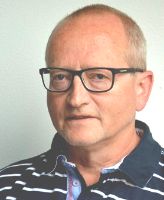 10.20-10.50
10.20-10.50Topic 4: Best farming and management practices
Chair: Magdalena Bieroza, SLU, Sweden
Keynote: Brian Kronvang, Aarhus University, Denmark
A new era of agro-environmental nutrient management practices in catchments -
10.50 - 11.10
Waterdrive catalogue of measures – share experience on agricultural water management practices around the Baltic Sea
Katarina Kyllmar, SLU, Sweden
-
11.10 - 11.30
Nutrient Removal From Tile Drainage Water Using Denitrifying Woodchip Bioreactors-Results From Pilot-scale Studies in Lithuania
Arvydas Povilaitis, Vytautas Magnus University, Lithuania
-
11.30- 11.50
Catchment controls for denitrification end products and nitrogen retention in remediated agricultural ditches
Lukas Hallberg, SLU, Sweden
-
11.50- 12.10
Pulp mill fibres in the field decrease soil erosion and phosphorus runoff
Jaana Uusi-Kämppä, Luke, Finland
-
12.10-13.00
Lunch
-
13.00-13.20
Best irrigation and fertilization management practice in the North China Plain
Xiulu Sun, Wageningen University & Research, the Netherlands
-
13.20 - 13.40
Catchment scale effects of soil tillage
Marianne Bechmann, NIBIO, Norway
-
13.40 - 13.50
Discussion
-
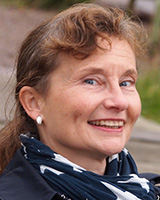 13.50 - 14.20
13.50 - 14.20Topic 5: Monitoring, modelling, and planning tools
Chair: Brian Kronvang, Aarhus University, Denmark
Keynote: Katri Rankinen, Finnish Environment Institute, Finland
Modelling soil and nutrients in a Nordic context, an example on impact assessment of the Finnish agri-environmental measures -
14.20 - 14.40
The results of the Agricultural Runoff Monitoring Programme in Latvia: An overview
Ainis Lagzdins, Latvia University of Life Sciences and Technologies, Latvia
-
14.40- 15.00
Water guide- decision support for selecting the right mitigation measure based on effects and cost
Mats Söderström, SLU, Sweden
-
15.00 - 15.20
Coffee
-
15.20- 15.40
Ins and outs of Norway's soil erosion risk map
Robert Jan Barneveld, NIBIO, Norway
-
15.40 - 16.00
National erosion risk maps and mapping of rill erosion in Denmark
Goswin Heckrath, Århus University, Denmark
-
16.00 - 16.20
Geostatistical mapping of soils properties on example of fallow agricultural field, locate on the polar circle Yamal-Nenets Autonomous District, Russia
Azamat Suleymano, St. Petersburg State University, Russia
-
16.20 - 16.40
Discussion and closure
-
16.40 - 16.55
Information about excursion 6th May
-
Friday, May 6, 2022
-
8.30-16.00
Excursion/field trip - Special program for registered participants
The excursion will start at Campus Ås visiting experimental sites from NIBIO and NMBU. The excursion will then go by bus to different locations in the agricultural landscapes from Ås to Romerike and Gardermoen area. These areas are dominated by marine sediments, productive soils and mainly cereal crops, but also other crops. There are areas with levelled soil with high erosion risk, inland lakes with eutrophication problems where agriculture is an important source. The excursion will visit farms and research locations where best management practices are implemented and studied.
The excursion will start from Vitenparken at 08.30. The bus will stop in Lillestrøm train station ca 16.00 - possible to change to train, 1 stop to Gardermoen Airport (12 minutes) or 1 stop to Oslo City center (9 minutes). The bus will return to Vitenparken in Ås ca 17.00.
Preliminary program:
- Farms that have implemented best management practices to reduce erosion and measures to increace carbon storage, improve soil quality.
- Field sites where effects of catchcrops on carbon storage, greenhouse gas emissions, yields are studied. Cropping systems, soil quality.
- National Agricultural Environmental Monitoring Programme in Skuterud Catchment. https://www.nibio.no/prosjekter/jova-program-for-jord-og-vannovervaking-i-landbruket?locationfilter=true
- Kjelle plot study site. Tillage, erosion, drainage, nutrient losses https://www.nibio.no/prosjekter/kjelle-ruteforsok
- Inland lakes with eutrophication problems. Kjelle wetland. Haldenvassdraget swater board.
- National Agricultural Soil Survey- Soil Inventory- typical soil profiles
- Visiting fields where topsoil is being removed after highway construction and replaced to other locations to improve soil quality.

Call for abstracts
The scientific committee will review submitted abstracts:
- An (extended) abstract (max one page) is required for each paper submission
- Please download the template file for the abstracts here
- Use the template to write your abstract and send it to soilandwaterconf@nibio.no
- A maximum of two abstract submissions per presenter
- A single presenter is allowed to present a maximum of two papers.
Deadline for submission of abstracts 15 January 2022
Location:
The conference venue is Ås Campus, Akershus, Norway.
The conference to be held at: Vitenparken
Google Maps: Vitenparken
Accomondation:
Thon Hotel Ski(www.thonhotels.no/ski)
Booking room at Thon hotel Ski (Individual booking)
Or individual hotel booking in Oslo or Drøbak , see e.g www.hotels.com hotels in Oslo or hotels in Drøbak
It is also possible to stay at hotels in Oslo and take train to Ås station traffic and routes times and then proceed by bus or walk to conference venue.
How to get there?
Thon Hotel Ski(www.thonhotels.no/ski) can be reached by:
- Walking to Ås train station and take train 1 stop (9 minutes) from Ås to Ski Station.
- By train from the airport to Oslo Central Station and proceed by taking train to SKI.
- By bus directly from Vitenparken in Ås (every 10 minutes ) 16 minutes
Vitenparken (conference venue) can be reached by: Timetable bus Ski-Aas
- By bus from Ski directly to Vitenparken in Ås (every 10minutes). 16 minutes.
- By train from Oslo Central Station to Ås station. Then proceed by the bus from Ski or walk to Vitenparken (20 minutes)
From Oslo airport (OSL) to Conference venue:
Bus:
The shuttle costs NOK 370,- regular price per person. https://www.vybuss.no/flybuss/fredrikstad-fb11/#!/ Cheapest order ticket online.
Train: By train from the airport to Oslo Central station and proceed by taking train to Ås.
Please do not hesitate to contact us if you have any questions.
Contact:

The excursion will start from Vitenparken at 08.15. The bus will stop in Lillestrøm train station ca 16.00 - possible to change to train 1 stop to Gardermoen Airport (12 minutes) or 1 stop to Oslo City center (9 minutes). The bus will return to Vitenparken in Ås ca 17.00.
The excursion will go to different locations in the agricultural landscapes from Ås to Romerike and Gardermoen area. These areas are dominated by marine sediments, productive soils and mainly cereal crops, but also other crops. There are areas with levelled soil with high erosion risk, inland lakes with eutrophication problems where agriculture is an important source. The excursion will visit farms and research locations where best management practices are implemented and studied.
Preliminary program:
- Farms that have implemented best management practices to reduce erosion and measures to increace carbon storage, improve soil quality.
- Field sites where effects of catchcrops on carbon storage, greenhouse gas emissions, yields are studied. Cropping systems, soil quality.
- National Agricultural Environmental Monitoring Programme in Skuterud Catchment. https://www.nibio.no/prosjekter/jova-program-for-jord-og-vannovervaking-i-landbruket?locationfilter=true
- Kjelle plot study site. Tillage, erosion, drainage, nutrient losses https://www.nibio.no/prosjekter/kjelle-ruteforsok
- Inland lakes with eutrophication problems. Kjelle wetland. Haldenvassdraget swater board.
- National Agricultural Soil Survey- Soil Inventory- typical soil profiles
- Visiting fields where topsoil is being removed after highway construction and replaced to other locations to improve soil quality.
